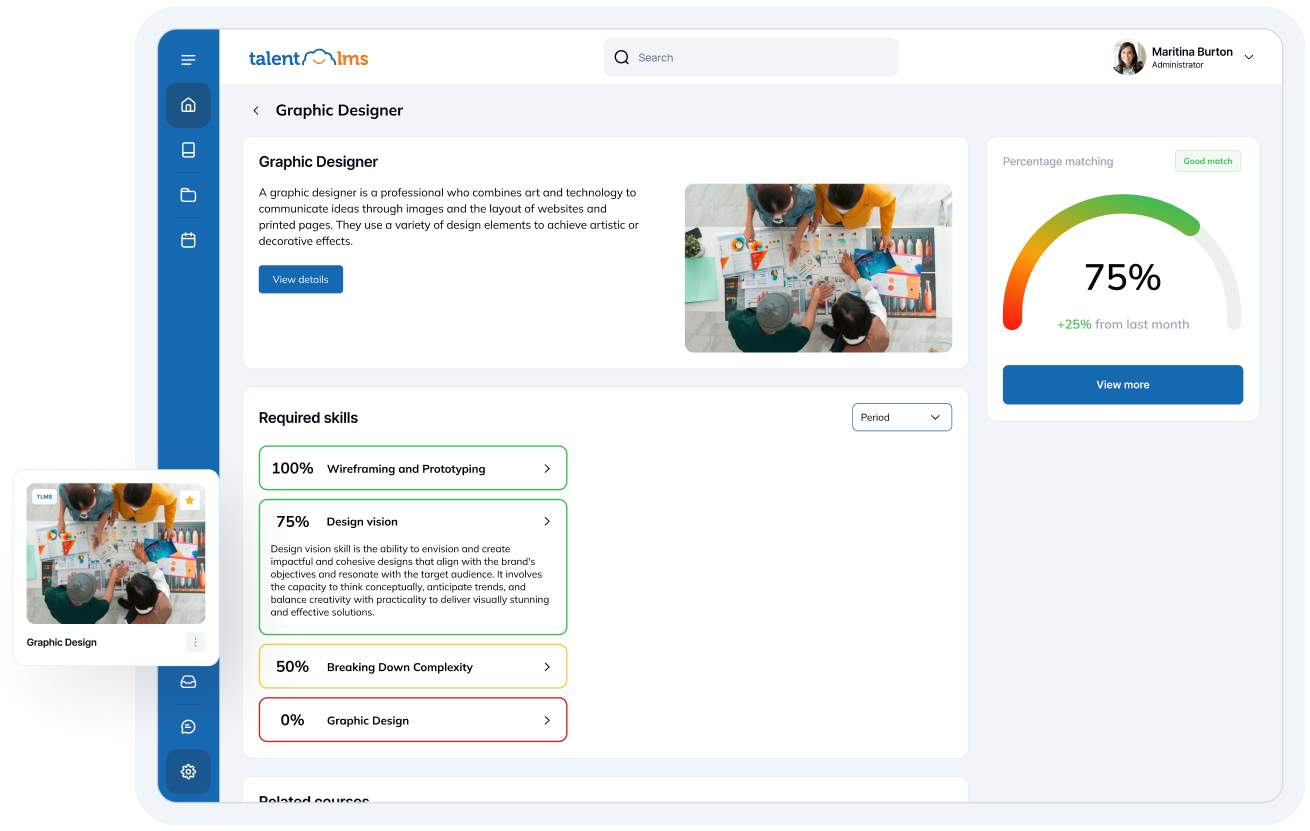- What is quiet hiring?
- Why this new trend has emerged?
- Quiet hiring and quiet quitting
- Examples of quiet hiring: What does it look like?
- Looking at the benefits of quiet hiring
- What is the role of HR in quiet hiring?
- How can employees make use of quiet hiring?
- Disadvantages and challenges of quiet hiring
- Is quiet hiring a good practice, after all?
- Striking the balance for organizational growth and employee wellbeing
Move over, quiet quitting—”quiet hiring” is the latest workplace trend. And it’s making waves among employees and employers alike.
Today’s job world is mercurial. As a result, companies are looking for innovative ways to grow and keep up with the times.
What is quiet hiring?
“Quiet hiring is the practice of an organization acquiring new skills without hiring new full-time employees.” according to Gartner.
Meaning companies use it to get the skills they need in smarter ways.
How? They don’t hire lots of new people the traditional way. Instead, they ask the employees they already have to take on new tasks, hire freelancers for specific projects, or use new tech tools. This allows companies to adapt quickly without going through the long and arduous process of finding and hiring new talent.
In brief, it’s all about making the most of what you already have.
People who work at these companies have the opportunity to upskill right where they are. For companies, it’s a savvy way to stay flexible and innovative. But it doesn’t come without its own challenges. Let’s explore in further detail why quiet hiring is beginning to trend and how it’s changing the game for everyone involved.
Why this new trend has emerged?
Quiet hiring is nothing new. It’s actually been around for a while. You might haven’t heard about it due to its nature, but the whispers have grown stronger.
The economic crisis, the ongoing talent shortage, and other threats of recession explain why the quiet hiring trend has emerged, as Cary Cooper, organizational psychology professor at The University of Manchester and member of the Academy of Management claims on Fortune.
As companies need to adapt quickly, especially when unexpected things happen, like the pandemic, quiet hiring proves to be a strategic solution. It’s a smart and popular way for companies to save money and time and keep up with changes without slowing down.

Quiet hiring and quiet quitting
Both quiet hiring and quiet quitting are two trends that have stirred up a lot of conversation in the modern workplace. Each represents different reactions to the evolving work environment.
Quiet hiring
As mentioned above, quiet hiring allows companies to look for other ways to get work done or get new skills without hiring new full-time talent. The goal is to stay flexible and adapt to new situations quickly and efficiently without the cost and time it takes to employ new staff.
It’s viewed as a proactive approach for companies looking to grow and innovate without increasing their permanent workforce.
Quiet quitting
On the other hand, quiet quitting describes employees who aren’t leaving their jobs but are doing the minimum required.
It doesn’t mean they’re slacking off. They’re just not going above and beyond their current job description. This trend became popular when employees began reevaluating their work-life balance. Or going the extra mile without receiving adequate recognition in return.
Quiet quitting reflects how employees react towards work—prioritizing personal time and wellbeing over the traditional model of career growth through overworking.
What’s the connection?
Both trends suggest a shift in workplace dynamics.
Quiet hiring demonstrates how businesses are trying to be more agile and efficient. Probably, it’s a response to the changing attitudes of the workforce. As highlighted by the quiet quitting movement for example.
Employees are looking for meaningful engagement and balance. And companies are exploring new methods to meet business needs without overwhelming their staff.
Together, these trends illustrate a search for a balance between company growth and employee wellbeing.
Examples of quiet hiring: What does it look like?
Let’s see two examples that illustrate what quiet hiring can look like in practice:
Cross-training existing employees
Let’s say a tech company needs more experts in cybersecurity due to increasing threats.
Instead of hiring new cybersecurity experts the company offers training to some of its current IT staff. These employees learn new skills in cybersecurity, helping the company meet its needs without the cost and delays of the traditional hiring process.
This approach fills the skill gap efficiently. Plus, it will boost employee morale by providing valuable growth opportunities.
Leveraging project-based freelancers
Imagine a marketing company looking for people with niche skills in video production and animation. Nobody in the current team has the know-how.
Rather than expanding their team, the company turns to freelancers with the specific expertise needed for the duration of the project.
The result? The company adapts to project demands flexibly. And manages costs more effectively without the long-term commitment of hiring new full-time employees.
Looking at the benefits of quiet hiring
The modern take of quiet hiring on managing employee needs and career development brings a bunch of benefits to both companies and employees.
Employee benefits
Here’s what you need to know about quiet hiring benefits for employees:
Career development opportunities
Quiet hiring offers existing talent new opportunities to learn. This leads to both personal and professional growth.
Job satisfaction and engagement
Employee engagement and job satisfaction increase as people take on additional responsibilities or work on new projects.
Employee retention
76% of employees say that they are more likely to stay with a company that offers continuous training opportunities. This underscores the employee retention benefits of quiet hiring.
Employer benefits
But how can employers benefit from quiet hiring? Let’s take a look:
Cost savings
Avoiding any expenses associated with the traditional hiring process (recruitment, onboarding, training, etc.) leads to significant cost savings.
Fast adaptability
Companies can respond to changes and demands swiftly by reassigning current employees or bringing in freelancers. Which also keeps companies competitive in the market.
Flexibility
Employers adjust their workforce based on current needs without the long-term commitment of a permanent hire. This provides operational flexibility.
Cultural boost
Promoting internally and allowing for developmental opportunities strengthens the company culture. Which, in turn, makes the company more attractive to current and prospective employees.
Access to specialized skills
Quiet hiring makes it easier to fill gaps for specific projects or needs. How? With highly skilled temporary employees or freelancers without the long-term investment.
Decreased hiring risks
Risks associated with permanent hires decrease. Companies can test out employees in new roles for a short period of time and then proceed to more fixed actions.
What is the role of HR in quiet hiring?
For quiet hiring to be effective, HR efforts are necessary.
Human Resources plays a powerful role. It acts as the architect and facilitator of this innovative approach. Here’s how HR can enable quiet hiring efforts within an organization:
1. Identify skill gaps and opportunities
HR is the first to recognize the areas within a company that could benefit from quiet hiring. This involves analyzing employee capabilities and understanding future project needs. Plus, identifying skills gaps that could be filled by existing employees or temporary talent.
2. Encourage internal mobility
It’s in the hands of HR to create the right structures and processes that foster internal mobility. HR can design clear paths for employees to take on new roles or challenges in the organization. All while ensuring employees have the support and training needed to succeed.
3. Manage training and development
Quiet hiring involves upskilling and reskilling current employees. And no one’s better placed than HR to coordinate such training programs. HR can also align training with both the individual’s career aspirations and the company’s end goals.
4. Cultivate a culture of continuous learning
HR promotes a culture that values continuous learning and growth. How? By highlighting success stories and facilitating mentorship programs. Then, employees become motivated to seek out new opportunities internally.
5. Coordinate with leadership
Managers and department heads must collaborate closely with HR. It’s important for HR to know the needs of each department and suggest the right internal candidates. This ensures a smooth transition and alignment with business objectives.
6. Manage freelancer and contractor engagements
When external talent is needed, HR manages the process of sourcing, vetting, and onboarding. At the same time, they ensure freelancers integrate well with the team and adhere to company policies.
7. Measure success and gather feedback
To continually refine and improve quiet hiring strategies, HR should measure the outcomes of these initiatives. To do so, they gather feedback from employees and leadership to understand what’s working and what needs adjustment.
How can employees make use of quiet hiring?
Employees can make the most out of quiet hiring and grow their career and professional experiences.
Here are what employees should consider to leverage quiet hiring opportunities to the fullest:
Be proactive about learning
People must stay informed about industry trends and the goals of their company. It’s wise to identify skill gaps within their team or business and find the right type of training that helps bridge them. Then, they should take advantage of any training opportunities employers offer. Or seek external resources to develop the in-demand skills within their organization
Communicate their interests
Managers should know about employee career aspirations. Or the types of project/roles people are interested in. When employees openly communicate these, leadership and HR can position them as a candidate when opportunities arise. At the same time, people should network and build relationships within the organization to quickly discover opportunities of quiet hiring for new projects or roles.
Demonstrate flexibility and initiative
Employees shouldn’t wait for opportunities to come to them. If they see a project that aligns with their skills or career goals, they should propose their involvement. This willingness and initiative shows flexibility and motivation, and can lead to quick upskilling within the organization.
Be a team player
Collaboration skills are as important as technical skills. Being someone who others want to work with, increases employees’ chances of being considered for new projects and roles.
Stay informed and adaptive
The workforce should understand the company goals, challenges, and successes to anticipate where quiet hiring might take place next. As the business world keeps evolving, so are the needs of employers. Being adaptable makes employees more valuable to the company.
Disadvantages and challenges of quiet hiring
While quiet hiring brings innovative opportunities for companies to adapt and grow, it also comes with its disadvantages.
How quiet hiring can affect employers
Let’s explore the ways quiet hiring brings challenges to organizations and leadership:
Overworking existing staff
Asking current employees to take on extra roles or tasks without proper compensation or support leads to burnout and decreased job satisfaction.
Mismatching skills
There’s a risk that internal employees might not have the exact skill set needed for new roles or projects. This leads to suboptimal performance and outcomes.
Cultural and integration challenges
Integrating freelancers or contractors into existing teams can lead to friction or lack of cohesion. Especially if there’s a big difference in work styles or company culture.
Neglecting long-term planning
Relying on quiet hiring might lead companies to neglect the development of a strategic hiring plan. Which can impact the organization’s scalability and innovation over time.
How does quiet hiring affect employees?
Here are the common challenges to employees face with quiet hiring:
Lack of clarity and direction
Employees might feel uncertain about how their career will progress within the company. Especially if roles and responsibilities are frequently changing without clear communication. 41% would view their company as disorganized, without a clear vision, if they were quiet hired.
Poor compensation and recognition
Taking on more responsibilities or roles without adjustments to compensation leads to dissatisfaction and feelings of being undervalued. Organizations should offer recognition incentives, like additional compensation, bonuses, extra time off, or flexible working hours and conditions.

TalentLibrary – Skills that matter, courses that deliver
With TalentLibrary, you set the foundation for a strong, aligned workforce—soft skills, compliance, and workplace essentials, from day one (and beyond).
Unmatched skill development
The chance to develop new skills is highly beneficial. But if those skills don’t align with an employee’s aspirations, it leads to a misalignment of professional goals. 50% of employees surveyed claim the role wasn’t aligned with their skill set when quiet hired.
Imbalance between work and life
Balancing extra tasks or roles strain an employee’s work-life balance. Especially if they’re expected to manage these alongside their original job duties.
Is quiet hiring a good practice, after all?
Yes, quiet hiring is a good practice.
But it needs to be thoroughly implemented and managed properly. Its success and appropriateness depends on the way it’s executed and the context in which it’s used.
When does quiet hiring work well? Here’s what you need to know:
Adaptability and agility
In industries where skills need to change rapidly, companies can remain adaptable and responsive without the churn of hiring and laying off.
Employee growth
It’s a great opportunity for employee development as employees acquire new skills and learn to tackle new challenges.
Financial management
A full hiring process for every new need can be rather costly. Businesses that opt for quiet hiring allow resources to be allocated elsewhere.
What should you consider for successful quiet hiring? Here’s a list.
- Communicate and clarify reasons and expectations around quiet hiring practices to ensure employees are valued—not exploited.
- Give support and resources to employees to succeed, including training, workload adjustments, and additional compensation.
- Align employee goals with organizational goals to ensure mutual benefit
- Monitor employee workload to prevent burnout and keep a healthy work-life balance
- Ensure growth and development opportunities are distributed fairly and inclusively
Striking the balance for organizational growth and employee wellbeing
Quiet hiring is about finding opportunities within challenges. And fostering a culture that values growth, flexibility, and innovation.
But it demands a thoughtful approach that considers the potential impacts on the workforce. And a successful way of mitigating negative aspects such as overwork, under-compensation, or lack of clarity.
When done right, quiet hiring can be a powerful tool for organizational resilience and employee satisfaction.
Originally published on: 24 Nov 2022 | Tags: Employee Engagement,hiring,HR





